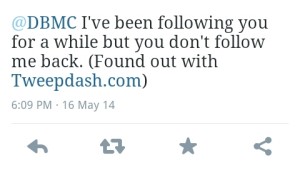Are we seeing more media crises?
This week featured two highly publicized and far-reaching media crises. One was the United Airlines situation, where a passenger was forcibly removed (and hurt in the process) from the plane, after he had been seated and had not agreed to “voluntarily” leave the aircraft. And the other involved White House Press Secretary Sean Spicer, who clumsily compared Syria’s Bashar al-Assad to Adolf Hitler, and then showed great ignorance about just what Hitler did during World War II.
Twitter outrage
I saw both these situations unfold on social media (specifically, Twitter), and was able to add my observations to many others, both using hashtags and Twitter handles. Social media outrage appears to have caused both United and Sean Spicer to apologize profusely for their mistakes. In today’s Washington Post, Kathleen Parker argues that in the United case, the Twitter outrage (or “mob” as she calls it) was able to bring the situation to light and make change happen.
It seems that we have more media crises these days than before–but like Parker argues, what has changed is the ability to get these situations in front of more people, more quickly, through social media. So, in fact, we may not be having more crises, but rather more exposure for and to these crises.
Changes…
It seems that United, and to some degree Sean Spicer, have still not adapted or recognized that the media landscape has changed dramatically. Anyone with internet access and a social media account can share their ideas, opinions, facts and more damning, their video. Also, anyone with a smartphone has the ability to create video on the spot, and then share it immediately.
Ten years ago, if a passenger had been dragged off a plane, there would have been no record of it outside of the memories of the other passengers on the plane. Similarly, Sean Spicer’s words would have received criticism later (if at all), not during his press briefing. Fewer people would’ve been exposed to these situations.
More “eyeballs” available
Today’s media crises are happening not because spokespeople and companies are screwing up more, but because more people are seeing it happen. It would behoove any public relations/communications practitioner to internalize that most everything can be publicized very quickly, and may even have incontrovertible visual proof with it.
About Deborah Brody
Deborah Brody writes and edits anything related to marketing communications. Most blog posts are written under the influence of caffeine.




